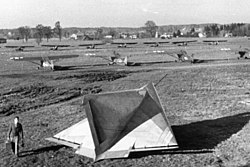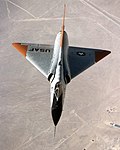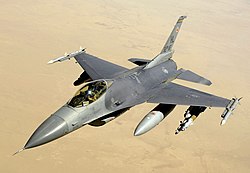

Vortex lift is that portion of lift due to the action of leading edge vortices. [1] It is generated by wings with highly sweptback, sharp, leading edges (beyond 50 degrees of sweep) or highly-swept wing-root extensions added to a wing of moderate sweep. [2] It is sometimes known as non-linear lift due to its rapid increase with angle of attack [3] and controlled separation lift, to distinguish it from conventional lift which occurs with attached flow.




